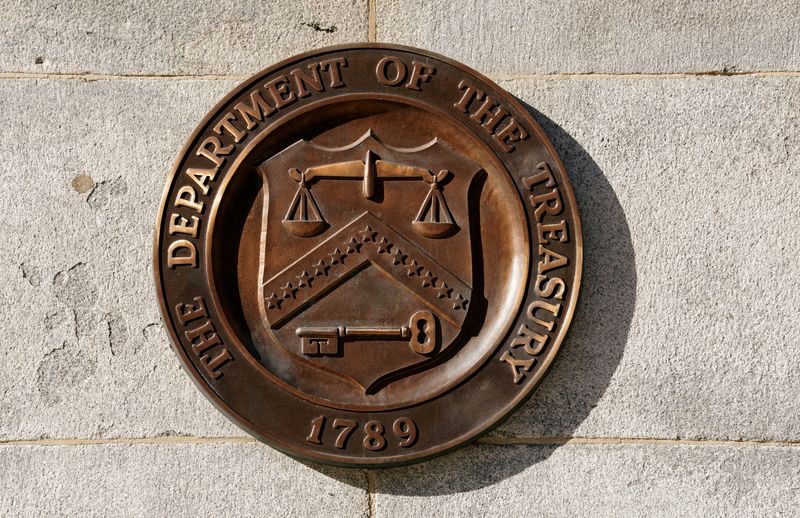By Karen Brettell
(Reuters) - The U.S. Treasury Department is likely to announce one more round of increases in its auction sizes when it details its borrowing needs for the coming quarter next week, as it faces higher spending needs due in part to higher social security and interest rate costs.
It is expected to pause increases for the rest of the year, however, which could give some relief to investors that have been concerned about increasing supply. Investors will also focus on whether the Treasury’s borrowing estimate comes in higher or lower than its last projection of $816 billion for the quarter.
The Treasury will give its financing estimate for the coming two quarters on Monday and offer details on its auction sizes for the next quarter on Wednesday.
The Treasury is likely to increase auction sizes across most Treasury maturities, except for the 20-year bond, which typically sees less investor demand. The size of the increases are expected to be similar to those made in November, though there are some questions over whether the Treasury will choose to continue to increase 30-year supply.
“The biggest wild card for the refunding is going to be whether or not the 30-year sector is upped again,” said Vail Hartman, U.S. rates strategist at BMO Capital Markets.
The 30-year maturity suffered from some weak auctions late last year as yields on longer-dated Treasuries rapidly ratcheted higher on concerns about supply and the view that the Federal Reserve will hold rates higher for longer to tackle inflation.
But analysts see another increase in the 30-year auction size as likely as the market has since stabilized and longer-dated yields have dropped sharply from their recent highs.
"The case for further reductions in the long-end, at least as a percentage of overall increases, isn’t nearly as strong after the rally," said Jonathan Cohn, head of U.S. rates desk strategy at Nomura Securities International.
The Treasury is also likely to continue to increase bill issuance for at least a couple more months, even as it surpasses the Treasury Borrowing Advisory Committee’s recommended range for bills to be 15-20% of total marketable debt.
Increased sales of bills, which are short-term maturities, give the Treasury flexibility, especially when concerns about the market digestion of longer-dated debt arise, Cohn said.
Meanwhile the pressure of higher supply due to the Fed’s quantitative tightening (QT) should start to ease this year, with the U.S. central bank expected to taper and eventually end the program.
In QT, the Fed allows bonds to fall off its balance sheet without replacement. It bought massive amounts of Treasuries and other fixed-income securities when businesses were shut down due to COVID to stabilize financial markets. Its balance sheet peaked at around $9 trillion in mid-2022, before declining to $7.7 trillion now.

The taper will “leave Treasury with lower financing needs at some point,” said Gennadiy Goldberg, head of U.S. rates strategy at TD Securities. “Deficits are still going to stay high, but one of the things that they can lean on is that they’re total financing needs will probably decline somewhat because they won’t have to pay back the Fed.”
The Treasury next week may also announce plans to launch a buyback program. This would involve buying back less liquid debt, and increasing issuance of the most liquid and current issues, which is meant to improve liquidity in the market.